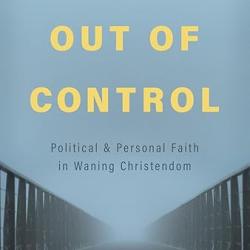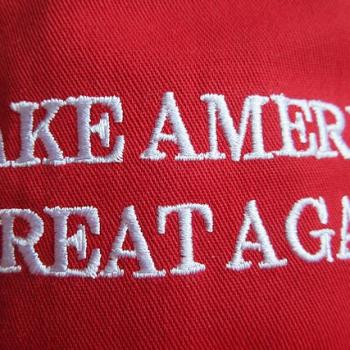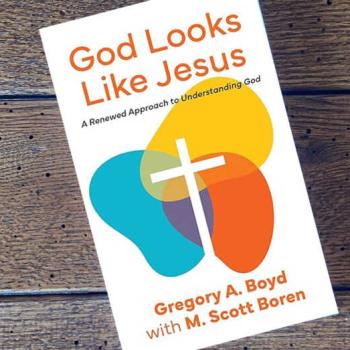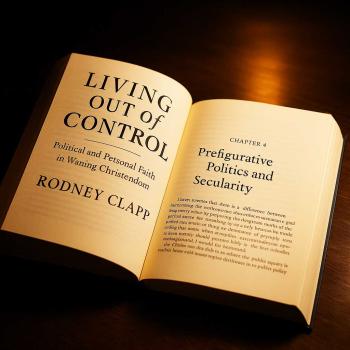“Diversity”: A Much Desired but Often Poorly Understood Goal
For most of my almost thirty-five years of full time teaching on the undergraduate and graduate levels (in American Christian higher education) “diversity” has been much discussed, promoted and debated. Everyone seems to want it, but many seem to desire something different. In other words, there is diversity of understanding of the much sought for “diversity.”
My impression is this: If you went around and polled the administrators and faculty members (to say nothing of students and staff) of most moderate-to-progressive American Christian organizations, especially academic ones, and simply asked “Is diversity in your organization desirable?” the vast majority would say “yes” if the only acceptable answers were “yes” and “no.” If “it depends” were an option, however, that would probably be a very popular response. If given the opportunity to ask “What is meant by ‘diversity’?” that would be many people’s response.
My experience is that especially accrediting societies and associations and administrators as well as many faculty members charged with promoting “diversity” treat it as an understood concept. “Diversity!” is the stated goal and everyone is expected to get on board. Most are willing to, but many have qualms about what it might mean.
Earlier here I talked about a similar situation with “integration of faith and learning.” I have heard the phrase used by scores of Christian educators and thinkers; it is often touted as the reason for being of American Christian institutions of higher education. And yet, rarely have I heard it explained in a clear and understandable way that avoids reasonably expected qualms—even among well-intentioned and reasonable people.
My experience in American Christian higher education has been that “diversity” is often simply “put out there” as a value and goal with very little explanation of its specifics. But, as we all know, the “devil is in the details.” In this case the details include such things as what kinds of diversity, how to achieve it, and how much will it cost—in terms of institutional changes. The people who are pressing Christian organizations and institutions toward diversity mean well, but they often (in my experience) do not foresee and forestall the qualms that will naturally arise even in people who whole heartedly agree with them that diversity is valuable and lacking.
Let’s be clear about what “diversity” means in most American organizational contexts. It usually means inclusion of “other voices and perspectives” than the dominant ones—especially where the dominant ones are those that tend to dominate the social landscape. It does not mean that every organization, community, ought automatically to reflect the diversity of America or the local community. For example, almost nobody is pressing for African-American churches (denominations or congregations) or organizations (e.g., traditionally black schools) to become inclusive of white people. Almost nobody is pressing for women’s organizations to become inclusive of males. When people in especially academic circles press for “diversity” they mean greater inclusion of “voices” (cultures, perspectives, gender, ethnicities) historically marginalized by the dominant white and male social power structures. It is generally understood and accepted that marginalized groups, traditionally oppressed and excluded, have a right to organize themselves into exclusive circles in order to support each other and exercise greater power and influence in the wider white and male dominated culture. Even within those circles, however, there may be talk of greater diversity within the group (e.g., based on age, ethnicity, etc.). Almost nobody thinks “diversity” means “more white males”—even where they are under represented.*
All that is simply to say that in American organizational cultures, including moderate to progressive Christian ones, “diversity” does not necessarily mean reflection of the differences existing in society and culture. It has a more specific meaning tied to sensitivity to oppression and exclusion by the “dominant culture” controlled mostly by Caucasian males and sustained mostly by them to keep their power over others. That is why it is rarely, if ever, urged, for example by national and regional accrediting societies and associations, that predominantly female or African-American schools achieve greater gender or racial diversity respectively.
I personally largely agree with this narrative; American society and culture has, for the most part, been dominated by white males and I do not argue, for example, that organizations must all reflect the diversity of their surrounding communities to the same extent. For example, I worry about a mostly white church located in a neighborhood populated by African-Americans and Hispanics. (And I have served on the ministerial staff of such churches and argued as such that they ought to change their worship styles and the makeup of their staffs in order to make the congregations more hospitable to their neighbors.) But I do not worry about a mostly African-American church located in a community populated by Caucasians to the same extent or in the same way. I do not concern myself about schools or institutions dedicated to empowering marginalized groups—Native Americans, African-Americans, women, Hispanics, etc. I do concern myself about schools and institutions that intentionally or unintentionally exclude marginalized persons and groups.
Is it possible for an organization or institution unintentionally to exclude people of certain ethnicities, gender, cultures, etc.? I believe that is much more common than many people realize. Every organization and institution has some corporate personality, cultural ethos, and more often than many would like to admit they are geared toward socially and economically dominant people because that is where the money is located. And because socially and economically dominant people like to remain dominant.
So, “diversity” in the sense stated above—not only the “plain meaning” but the “enlightened meaning”—is something I support—except when its pursuit undermines goals desirable for everyone—including the marginalized. Unfortunately I have seen that happen. And I have experienced how, in the current American academic cultural climate, hesitating in support for and pursuit of “diversity” based on concern for such universally desirable goals can lead to accusations of being reactionary (even “racist”).
Many people who genuinely desire “diversity” in the enlightened sense explained above, based on the narrative of domination and oppression, which they consider true, have qualms about specific projects for the pursuit of diversity simply because they have seen how they can get “out of hand” and undermine universally desirable goals. They want to be assured by the leaders that “diversity” will not include the lowering of academic standards, the obliteration or corruption of the canon of literary classics, the ignoring of all influential “D.W.M.s,” or the reverse marginalizing and resulting oppression of Caucasians or males. They want to be assured it will mean greater inclusion without new forms of exclusion and the true enhancing of everyone’s educational experiences without lowering academic standards.
*I have expressed here before (i.e., on this blog) my own belief that if schools are going to have programs to include more females in the “S.T.E.M.” disciplines and professions they ought also to have programs to include more males in those disciplines and professions where they are underrepresented—both programs justified by clearly discernable obstacles to gender inclusion and not based solely on lack of interest.












